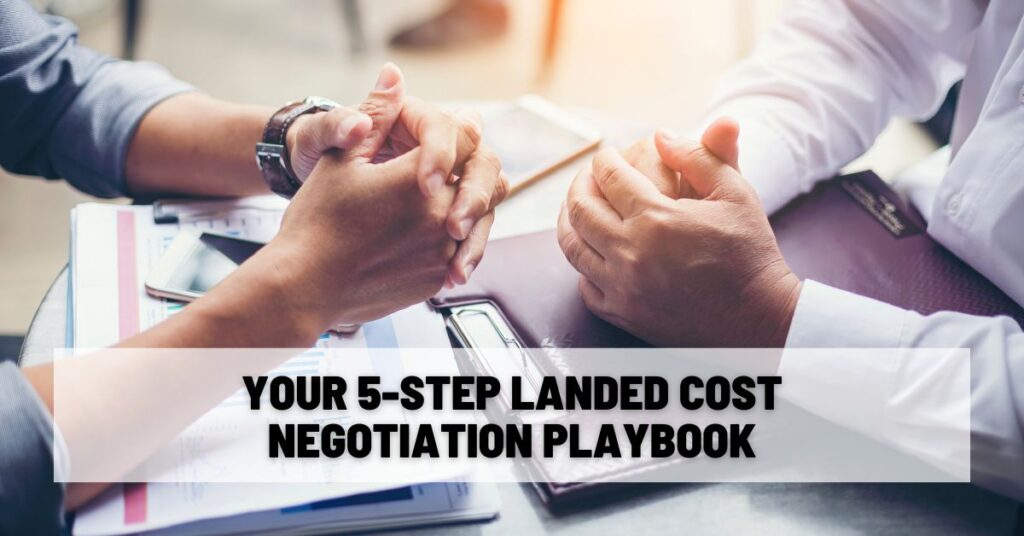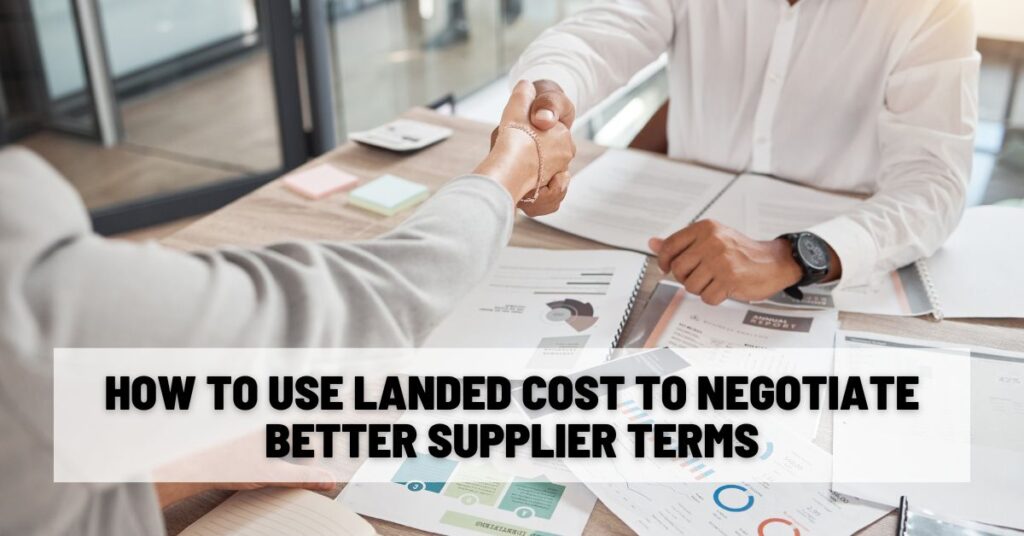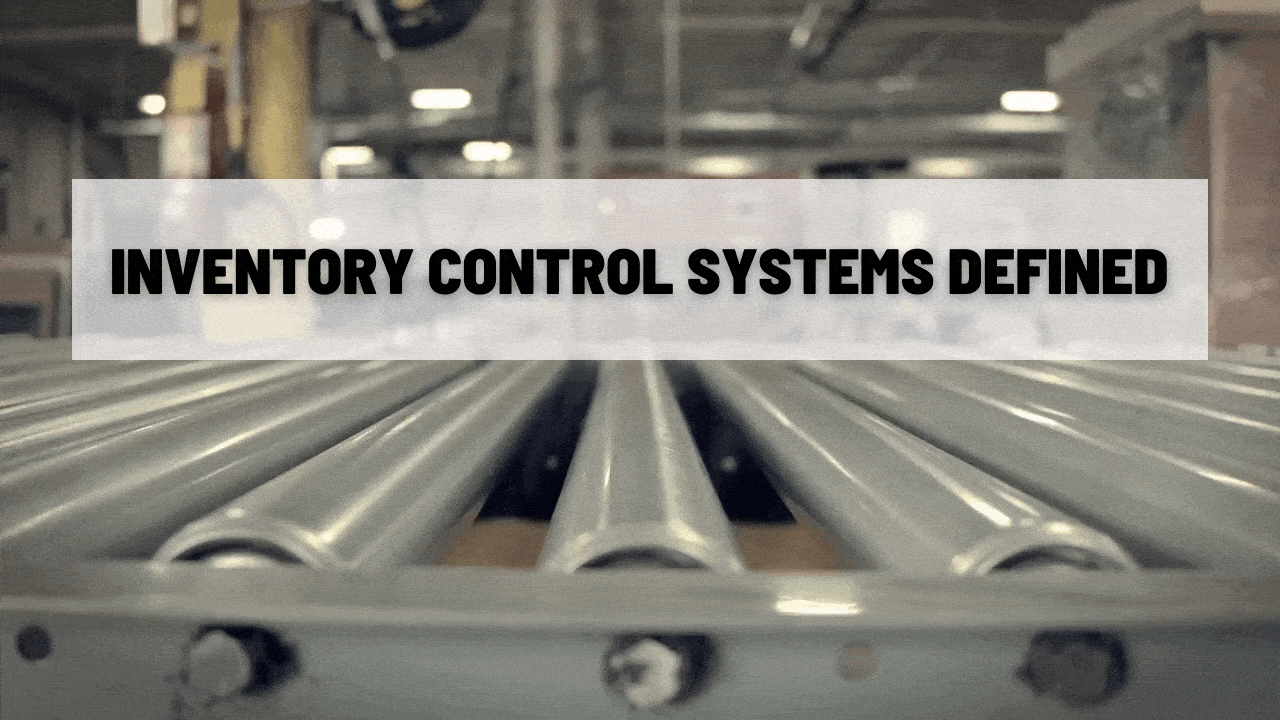How to Use Landed Cost to Negotiate Better Supplier Terms
Picture this: You walk into a supplier negotiation armed with nothing but a vague idea of what you’re paying per unit and a prayer that they won’t notice you’re winging it. Your supplier, meanwhile, knows exactly what their competition is charging, what shipping routes cost down to the penny, and precisely how much room they have to negotiate.
Guess who’s winning that negotiation? (Hint: It’s not you.)
Now imagine the opposite scenario. You stride in with a comprehensive landed cost analysis, casually reference the true all-in cost of working with their competitors, and watch as they suddenly become very interested in “finding ways to make this work.”
That’s the power of showing up prepared—and nothing says “I’ve got my operation dialed in” quite like having your landed costs down cold.
What Landed Cost Actually Means (And Why Suppliers Hope You Don’t Know)
Landed cost is the total price of a product once it’s arrived at your doorstep and ready to sell. That’s the plain invoice price, plus shipping, customs, duties, taxes, insurance, currency conversion, handling fees, and any other costs that sneak in between “we’ll take 1,000 units” and “okay, they’re in our warehouse.”
Most businesses track maybe half of these costs accurately. The rest lie buried in different spreadsheets, lost in accounting categories, or just flat-out ignored because “that’s how we’ve always done it.”
Your suppliers are counting on this. They know that if you’re only looking at unit price, they can squeeze you on shipping terms, payment conditions, and volume requirements while still looking competitive.

The “Professional Operator” Power Move
When you show up with a complete landed cost breakdown, something wonderful happens in your supplier’s brain. Suddenly, you’re not just another customer haggling over price—you’re a sophisticated operator who clearly has options.
Instead of: “Your price seems high. Can you do better?”
You say: “At $47.83 landed cost per unit, you’re 12% above my alternatives. But I noticed your shipping terms are FOB origin. If we switched to FOB destination, where would that put us?”
One of those sounds like an amateur. The other sounds like someone who has three other suppliers on speed dial and a CFO who actually likes them.

Your 5-Step Landed Cost Negotiation Playbook
Ready to level-up your supplier negotiations? Here’s your game plan:
1. Map Every Single Cost Component
Before you even contact the supplier, document:
- Base unit price
- Shipping costs (including fuel surcharges)
- Customs duties and tariffs*
- Insurance
- Currency exchange fees*
- Payment processing fees
- Warehousing costs at destination
- Any inspection or certification fees
*If ordering from overseas.
2. Create Scenarios They Can’t Ignore
Armed with your data, build three scenarios:
- Current terms with current supplier
- Best alternative supplier (with their actual landed costs)
- Current supplier with optimized terms
Your goal is to make your options clear and accurate. Nothing motivates a supplier quite like seeing their competition’s numbers on your spreadsheet.
3. Focus on Total Cost, Not Just Unit Price
Rookie negotiators fixate on unit price. Pros know that payment terms, shipping arrangements, and volume commitments can swing your real costs by 20% or more.
Would you rather pay $50/unit net 30, or $52/unit net 90? If you’re financing inventory, what appears to be the “more expensive” option might actually save you money.
4. Make Geography Work for You
Sometimes the supplier 2,000 miles away has a better landed cost than the one 200 miles away, thanks to shipping routes, port efficiency, or customs arrangements. When you can casually mention that the Malaysian supplier beats the Mexican one (for example) after all costs are considered, watch how quickly “impossible” discounts become possible.
5. Use Transparency as Leverage
Here’s a counterintuitive truth: sharing some of your landed cost analysis with suppliers can actually strengthen your position. When they see you’ve done your homework, they know two things:
- You’re a serious buyer who makes decisions based on data.
- BS pricing tactics won’t work on you.
Knowledge of Landed Cost is Negotiating Power
The businesses that get the best deals with their suppliers aren’t necessarily the biggest or the ones with the most leverage. They’re the ones that show up prepared, ask intelligent questions, and make it clear they understand the true economics of their supply chain.
If you want to be one of them, you need a system that tracks all your costs in one place, updates in real-time, and can spit out landed cost reports that make you the sharpest operator in the room.



